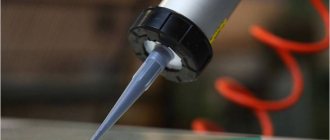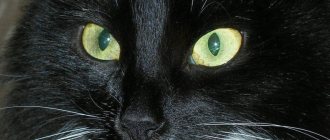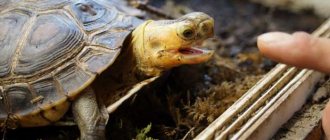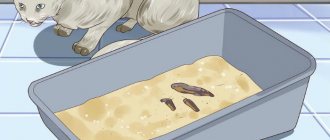Shape and material required for a terrarium
A terrarium is a wide and long closed box, of small height, with special holes for ventilation.
The best material to use is non-toxic plastic, which is very light and easy to use. You can also try materials such as plexiglass, wood and regular glass. You can leave the transparent side through which you will open the turtle and feed it. It is important to take into account that in some cases turtles simply do not notice glass walls and often hit the glass with their shells. In this case, it would be better to glaze the walls with a beautiful terrarium background.
The terrarium can be made in the shape of a square or rectangle. It is very practical when, when opening the terrarium, you can slide the glass out of special grooves or simply remove the glass, which is attached to special magnets. The height of the side should be made no less than 10-20 cm in order to conveniently pour soil there and so that the turtle does not have the opportunity to crawl out.
Feeding
The natural food for the Central Asian turtle is weeds. In our area, this includes bluegrass, sow thistle, plantain, chickweed, dandelions, clover, chamomile and other edible wild herbs. You can offer young leaves and flowers of fruit trees, birch buds, hibiscus flowers, false acacias and other edible plants. For the winter, these plants can be stored frozen or dried.
In winter, you can feed various types of salads, herbs, indoor plants, and add a variety of fruits and vegetables.
If the turtle refuses to eat defrosted summer grass, then in winter you can feed various types of salads, herbs (dill, parsley, basil, etc.), indoor plants (chlorophytum, hibiscus, tradescantia, etc.), add a variety of fruits and vegetables (apples , pears, citrus fruits, kiwi, tomatoes, carrots, sweet peppers, kohlrabi, beets, strawberries, plums, etc.).
You cannot feed: onions (green and onions), garlic (heads), potatoes (raw and boiled), animal products (liver, cottage cheese, eggs, fish, etc.).
Since the herbs, fruits and vegetables available to the vast majority of owners are surrogates of steppe grasses, it is necessary to add vitamin and calcium supplements to the diet. As a rule, manufacturers offer a set of such supplements: multivitamins in powder and, separately, powdered calcium. These supplements should be mixed in a ratio of 2 parts calcium to 1 part multivitamin. This mixture is given with each feeding in the amount recommended by the manufacturer.
Where can I buy a terrarium?
You can purchase housing for turtles in specialized pet stores, order it, buy one that has already been used, or make it yourself (glue together prepared glass, install ventilation and the necessary lamps). If you have a limited amount, you can use cheaper suitable methods:
Separate section of floor
The temperature in the room should be stable, no more than 26 degrees, and the lamps should be turned on above the designated pen. You need to select a suitable area in the corner, which is covered with a piece of linoleum or laminate, after which it is fenced off on the open sides with a special fence. We pour gravel into the prepared pen, maybe hay or sawdust, and install lamps and a house. You can bring several land turtles into this enclosure. You can fence it with an ordinary wooden fence, which will be 2-3 times higher than the length of the turtle itself.
Glass aquarium
A horizontal aquarium can also be used as a terrarium. It is recommended to take aquariums for aquatic turtles that have a place on the lid to place a UV lamp, and also have convenient ventilation holes, but without a guard.
Plastic container
Typically, such a container is inexpensive, but has a large area. It is important to place the lamps correctly and practically. It would be better to close it a little on top so that all the heat does not escape outside. For small turtles, you can use a carrier for the first time, it is important to somehow place our lamps above it, and inside it - a house. This container is also quite suitable for rodents.
Regular wooden box
Such a box will also be inexpensive, but will provide a lot of space. Here it is also important to place the lamps well and conveniently. It will be much better if it is closed on five sides and has a glass side at the front. A good option is a wide, high shelf that has sliding glass. Do not forget about special openings for better ventilation and for lamps. The wooden bottom should be covered with laminate or plastic.
Cabinet shelf
Here you will need to try hard and make holes, and then attach the lamps well. You need to choose a shelf that is wide and high so that the turtle does not get burned.
How to keep a land turtle
Land turtles are one of the most unpretentious animals kept at home. And many owners do not suspect that the conditions of their placement can increase the lifespan of the reptile, and this is important for a pet that has become dear and loved.
There are 2 options for a turtle to stay in the house: in a terrarium and freely kept on the floor. Each of them has its own pros and cons.
Contents in a terrarium.
Advantages and disadvantages
It is easy to maintain the required temperature, light and UV exposure levels.
Availability of soil for digging.
Protection from accidental damage.
Availability of drinking bowl and feeder.
Lack of movement, especially when the size of the terrarium is less than the established standards.
If the terrarium is installed incorrectly, there is a risk of overheating.
Free keeping at home.
Advantages and disadvantages
No confined space.
Possibility of independent choice of resting place (hibernation).
Failure to comply with the required parameters of temperature, illumination, lack of UV radiation.
Susceptibility to drafts, ingestion of dust and small objects.
Crawling into cracks and high risk of injury.
Difficulties in feeding and cleaning up after the reptile.
Thus, the advantages of keeping a turtle in a specially equipped terrarium outweigh the advantages of keeping it free. And the owner of a turtle living in a terrarium always has the opportunity to let it out for a walk, while watching it and avoiding injury and stress.
Place where you want to install the terrarium
First you need to select the place where the terrarium will be located, as well as the number of its “inhabitants”. It is necessary to calculate for 2 individuals; moreover, it is worth considering that over time the turtles will grow, so it is recommended to make the terrarium “for growth”.
The most optimal home for them is a dark room or north side. The whole problem is that the bright rays of the sun that will penetrate the room will greatly warm the terrarium, which is closed on all sides, and special ventilation holes simply cannot withstand such a temperature. After all, the temperature in the terrarium itself can reach 400 C, which can even lead to the death of the animal. That is why it is also impossible to use attics and attics of the house for their placement. Even the most powerful air conditioner is not able to save the terrarium from overheating.
Those who have cottages are recommended to use basements or semi-basements that have good heat and water insulation to place terrariums. Otherwise, sometimes during floods or after heavy rains, it will be necessary to pump out water from the basements. You can set aside a place for a terrarium even in a small room: near a blind door, on the wall. But it is not recommended to combine such dwellings, especially damp ones, with television or other equipment. Indeed, if water gets into them, they can be damaged or, worst of all, lead to a fire. It is very easy to place one terrarium, but if you have several of them, you will need to make a stand. The material for its manufacture directly depends on the volume and type of terrarium. If it is small in size, it will be enough to build a wooden structure, or you will have to use a steel angle or pipe. Cold-loving rocks are placed on the lower tiers, and heat-loving rocks, respectively, on the upper tiers. If necessary, the shelves can be insulated using foam plastic. It would be good if the terrarium for heat-loving and cold-loving species would be located in different rooms.
Selecting a sealant
Glue plays the main role, because it is thanks to it that the entire structure is fixed and further retained. There are many types of substances that can be used to connect pieces of glass to each other. But with regard to aquarium glue, the following requirements are put forward:
- non-toxic;
- high strength;
- elasticity;
- presentable appearance;
- relatively fast setting;
- ease of application;
- long service life;
- high degree of adhesion.
Sealant for aquariums
Silicone sealant has all these properties
But when purchasing, you should pay attention to the fact that it is 100%, without impurities and not antibacterial, otherwise the living creatures will simply die. Today there are three main colors available: white, transparent, black. If you use the first one, the aquarium will have the appearance of a certain incompleteness
The second is well suited for products up to 100 liters. Anything more is best glued with black. Small structures with it look very bulky, but in large ones, on the contrary, it emphasizes the lines and gives elegance. The choice of those who have been assembling aquariums for some time often falls on Dow Corning 911, KNAUF 881 or Kleiberit Suprasil 590E
If you use the first one, the aquarium will have the appearance of a certain incompleteness. The second is well suited for products up to 100 liters. Anything more is best glued with black. Small structures with it look very bulky, but in large ones, on the contrary, it emphasizes the lines and gives elegance. The choice of those who have been assembling aquariums for some time often falls on Dow Corning 911, KNAUF 881 or Kleiberit Suprasil 590E.
Climatic and ventilation conditions
Special holes for ventilation need to be made at the top or on the sides, or at the bottom. To heat a turtle's home, they do not use thermal cords or thermal feeders, but a regular incandescent lamp up to 60 W. Heating from below can harm the kidneys. And the lamp will be located in one corner and thereby form a warm zone in which the turtle will eat and bask, and the bathing suit will also be placed there. On the opposite side, where there is no lamp lighting, it will be a little cooler; you can install a house there. In a warm corner it should be about 300C, and in a cold corner - from 25 to 280.
Description of the species
Ornate turtles (Chrysemys) are divided into eight species. Their representatives live in various bodies of water in South and North America. The most famous of them is the beautiful and slender red-eared turtle.
Its shell reaches 28 cm in length. The pattern on it and coloring are individual for each individual. A characteristic feature of this species is two orange, red or yellow spots that are located on the sides of the head.
These turtles prefer shallow, swampy waters. In their homeland, they are more often called “red-eared sliders” for their special manner of running away from danger at very high speed, sliding their belly along the surface of the soil in order to quickly dive into the water.
Examples of Terrariums
Island for relaxation
Terrariums for red-eared turtles must have a piece of land where your heat-loving pet can rest and warm up. Its size should be equal to approximately a quarter of the entire home.
Such an island is usually a pile of pebbles secured with sealant. Wooden parts should not be used, since this is an unstable material and, by absorbing water, it will create conditions for the appearance of mold. But natural driftwood, as well as tree bark, can be used for these purposes.
Be sure to install lamps above the island. By warming up under them, the turtle strengthens its immune system. You can use a special device for these purposes - a thermostat connected to a glass tube. It is very practical and affordable.
When creating a terrarium for red-eared turtles with your own hands, you can save time by purchasing a ready-made island at a pet store. These devices meet all the requirements of the inhabitants of the terrarium - they have a rough surface made of waterproof plastic so that the turtle’s paws do not slip on it.
A terrarium for red-eared turtles must meet safety requirements - pebbles should not have sharp edges. Their size should not be too large to prevent animals from swallowing them. It is better to replace the green plants of a regular aquarium with various driftwood and caves.
Remember that when you choose a red-eared slider as a pet, you are responsible for its quality of life.
Compatibility
Turtles are loners. In their natural environment, they gather in groups for mating and fighting. Keep turtles together only if there is no other option and they are of the same species and size. But even then conflicts arise. Different breeds require different conditions of maintenance.
Keep exotic turtles separately.
They can coexist with some iguanas in large vertical terrariums. If you try to make friends with a small reptile, the latter may lose its tail or paws. Turtle secretions are poisonous to snakes.
Taming
To help your turtle eat from your hands, feed it while holding the food with your fingertips. Remember, once your pet gets used to this way of eating, it will begin to chase its owner.
Initially, turtles are not very friendly towards people. To wean your animal from biting, pick it up more often without making sudden movements.
Turtles have excellent hearing; when giving food or before bathing, make the same sound and the pet will begin to respond to it.
Animals remember and recognize their owner. They love to watch what is happening in the room.
Habits are quickly formed regarding feeding times and daylight hours. Not receiving food at the usual time, the pet will sigh and move its head in disappointment.
Reproduction
Age of turtles ready for mating:
- females 10–12 years old;
- males 5–6.
Mating time is from February to August.
Before mating, separate the partners for two weeks. This will increase the male's interest, as will competition in the form of another male.
Maintain the temperature at 25–30 degrees. At lower rates, the male’s sperm will not mature.
The female builds nest holes, usually 2–3, lays up to 6 eggs in each and forgets about the offspring.
Pregnancy lasts 2 months. During and after gestation, the turtle requires increased nutrition.
Place the eggs laid in the hole in the incubator. The soil layer is 18 cm, the temperature is 29–30 degrees. At high temperatures there will be early development of the baby turtle. He does not get out of the shell and dies.
It takes about two months before hatching.
How to determine gender
Sex determination is possible from the age of 1.5-2 years.
Whether an adult is male or female is determined by the following characteristics:
- Body structure. Among the same yearlings, females are clearly larger and more rounded, while the male’s body is more elongated and oval.
- Abdomen. Plastron - the lower part of the shell in females is flat or slightly convex, in males it is concave. This feature is due to the gestation of eggs.
- Spurs. Leather growths on the thighs of males contribute to fixation on the female during the mating process. The female individual does not have them.
- The back of the shell. In males, the tail is curved towards the ground and almost completely covers it. In females the score is almost invisible.
- Tail. Is a sexual organ. In females it is thin and short, in males it is long and large.
- Cloaca. The female one is shaped like an asterisk and is located close to the shell. Male - longitudinal and closer to the tip of the tail.
- Eyes. Most often, yellow eye color is a sign of a female, and brown is a sign of a male.
- Behavior. Females are calm, males are aggressive. Only males participate in fights. Males are also characterized by mating dances and attempts to mount the female.
It is impossible to determine the sex by the claws, since their condition depends on the soil. In nature, males have longer and thicker hair, which simplifies the mating process.
Adviсe
- The turtle will not play like a cat or dog.
- Protect your pet from drafts, feed it a variety of food, and treat it on time.
- Think carefully about the purchase, because the pet lives quite a long time, and if released into the wild, it will die in the natural conditions of central Russia.
Turtle is a great choice for people who don't like noise. A leisurely turtle relaxes and clears the mind of hustle and bustle, and taking care of it brings true pleasure.
Previous
Inhabitants of the 12 most popular species of snails in the aquarium
Next
Inhabitants7 main components for feeding the red-eared turtle
What not to do
- Color the shell.
- Allow it to hibernate.
- Give medications without consulting a specialist.
- Accommodate a new resident without quarantine for a month.
- Allow animals to play with the turtle.
- Keep the turtle on the floor.
- Leave without a shelter house.
- Use fabric, cotton wool, or wool instead of primer.
- Place aggressive pets together.
- Constantly feed the same thing.
- Cat, dog, human food.
- Animal food.
Reviews from aquarists
Reviews from owners are varied. Someone expresses complete delight, another begins to hate the animal.
Price
The cost of an individual varies from 200 rubles to 150,000 or more for rare species. The refusenik can be found on websites for free.
| Name | Price (rubles) |
| Greek, Mediterranean (Testudo graeca) | 2160–4800 |
| Leopard, Panther (Stigmochelys pardalis) | 3840–7680 |
| Indian starfish (Geochelone elegans) | 5000–12000 |
| Redfoot, Charcoal (Chelonoidis carbonaria) | 3840–4800 |
| Madagascar radiata (Astrochelys radiata) | 24000 |
| Central Asian (Agrionemys horsfieldii) | 500–3000 |
Prices depend on characteristics:
- floor;
- age;
- rarity of the species.











